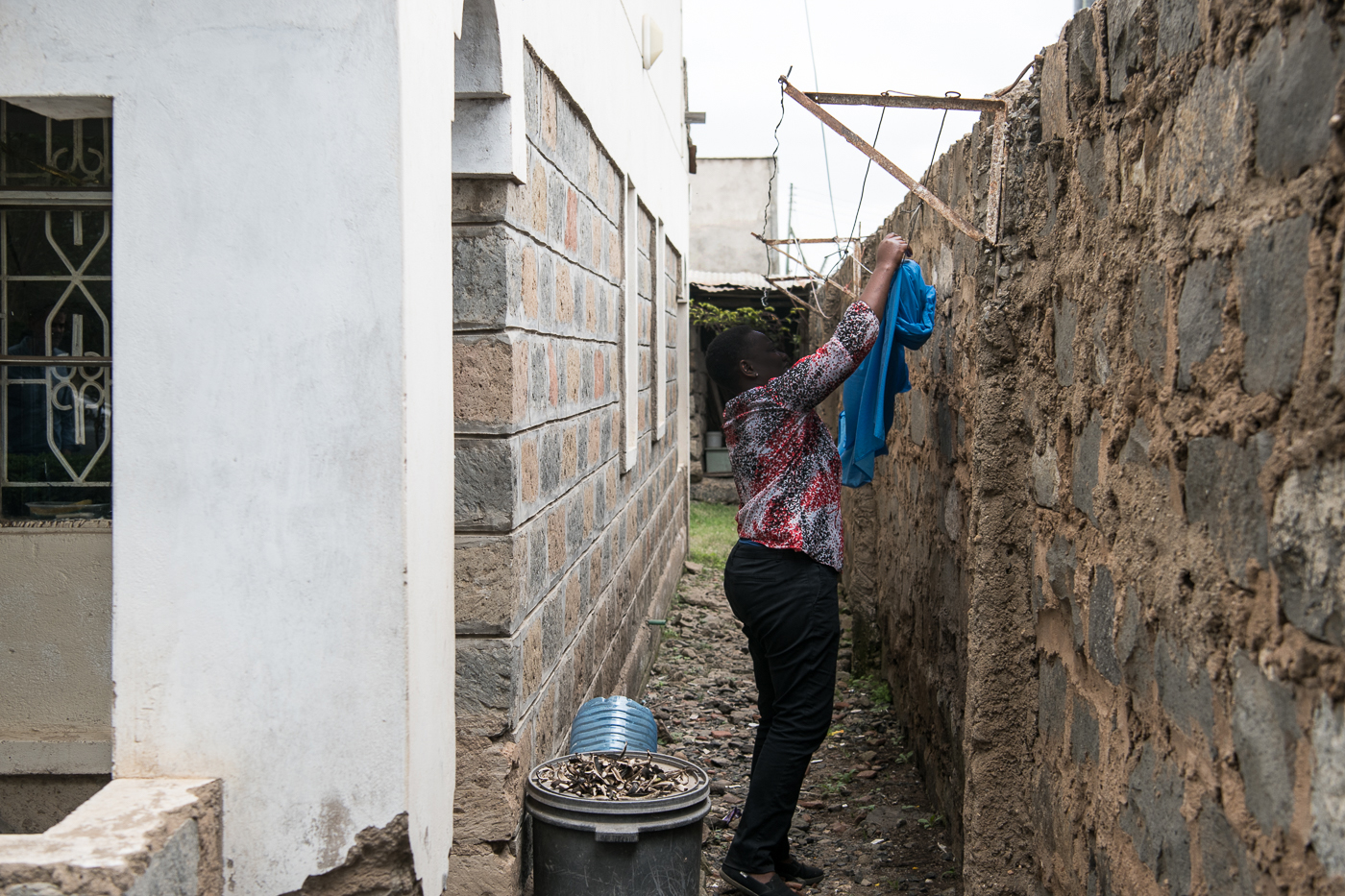Jackie: Dual Challenges of Cervical Cancer and HIV
Cervical cancer screening programs are a cost-effective way to save thousands of lives per year.
6 September 2018 – In Africa, where cervical cancer is the leading cause of cancer death among women, those living with HIV are approximately five times more likely than HIV-negative women to develop cervical cancer.
Jackie is living with both HIV and cervical cancer. She is a mother of two who tends to a house she built on the outskirts of Nairobi. When she began experiencing excruciating abdominal pain and bleeding, she realized that her persistent weakness and exhaustion were not normal. She visited two hospitals and researched health care services online before she found a free cervical cancer screening program for patients living with HIV at Coptic Hospital. She knew it was the place she could get help, but it was almost too late.

Jackie, a mother of two living with HIV and cervical cancer, lives in the home she built on the outskirts of Nairobi, Kenya. Women who are HIV positive are five times more likely to develop cervical cancer.
“When I was diagnosed [with cervical cancer], when I knew about my status, I was devastated,” said Jackie, who is in her early 40s. “The only option that came was for me to go for a surgery called hysterectomy. It was like now the world was even darker. By the time I went for surgery I was prepared enough but at the back of my mind I was carrying a burden. These are two issues: HIV and cervical cancer. I saw myself in the middle drowning.”
Though Jackie’s cancer is now in remission and she is slowly regaining her strength, her situation could have been avoided. Integrating HIV and cervical cancer services at the same sites is convenient for patients and improves the quality of care.

Jackie is living with HIV and cervical cancer. She battles isolation along with her illnesses, but is determined to return to work as soon as she is able
“It’s really a shame because it’s a preventable cancer death,” says Dr. Michael Chung, co-founder of the Coptic Hope Center for Infectious Diseases, an HIV clinic that has become one of the largest single-site HIV treatment centers in Kenya. “In the West…we do Pap smears, and cervical cancer screening, so it’s not a leading cause of death. But in Kenya, it is, which is really unfortunate and something we can do a lot about.”

Jackie hangs her laundry. Women living with HIV are five times more likely to develop cervical cancer, but with cervical cancer screening integrated into HIV services, more women can be diagnosed and treated early.
Most cases of cervical cancer are caused by a very common virus, human papillomavirus (HPV). Women living with HIV are particularly vulnerable to this virus.
Women enrolled in HIV treatment programs make regular visits to their health provider, so they can be regularly screened for cervical cancer. If they have a pre-cancerous lesion developing, they can be treated immediately.

Jackie walks through her neighborhood. Her journeys outside the house are currently limited to short shopping trips and visits to her doctors.
“We spend billions of dollars a year to identify and treat women with antiretroviral therapy; we should spend a few more dollars to screen them and make sure they don’t die of cervical cancer,” said Celina Schocken, Executive Director of TogetHER, an international partnership focused on ending cervical cancer. “More can be done globally to incorporate HIV and cervical cancer care into single programs, and it’s part of TogetHER’s mission to make sure this happens.”
Dr. Chung’s integrated HIV and cervical cancer research is being used to inform similar programs throughout the developing world, where the biggest opportunity for HIV and cervical cancer program integration exists.

Jackie speaks on the phone to her sister. Jackie has relied upon her support from diagnosis to treatment and her recovery, though her sister lives far away.
“The work we are doing is really to examine what is the best way to screen for cervical cancer and treat pre-cancerous lesions in HIV-infected women,” said Chung. “What we’re trying to do is inform the algorithms…that can now tell us how we should screen for cancer in these specific populations,” said Dr. Chung.
“The biggest difference we’re going to make for cervical cancer among HIV-infected women is to take advantage of the infrastructure that has been set up for treating their HIV through the antiretroviral clinics that have been established throughout the developing world,” says Dr. Chung. “This is a golden opportunity for us to set up cervical cancer screening programs in the same locations. It’s something that has to be seen a ‘low hanging fruit’ for donors and in the international community.”
Thank you to Dr. Michael Chung for his advice and support with this work, and to Aga Khan University East Africa and Treatment, Research, and Expert Education (TREE).

